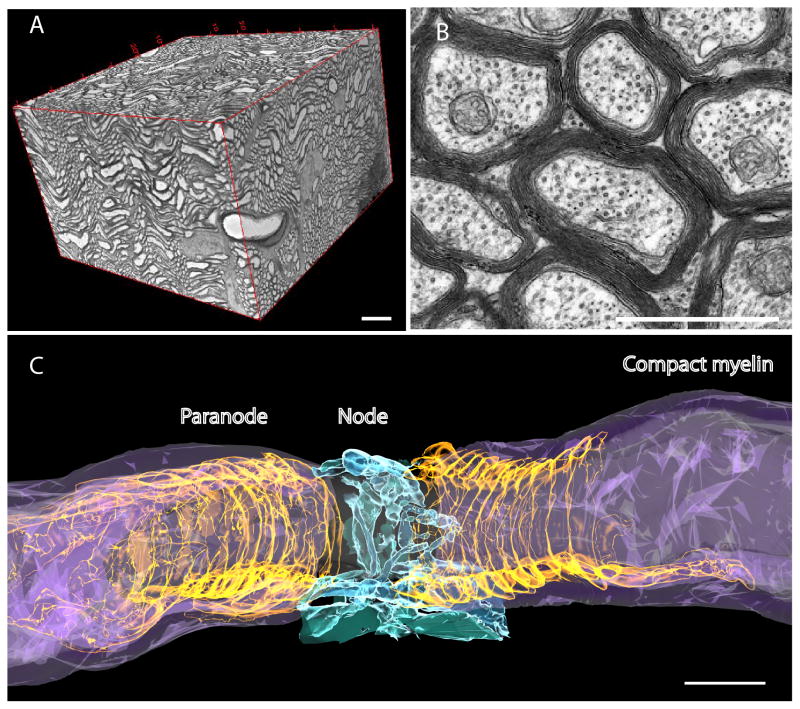Figure 1.
Conduction time between relay points in neural circuits must be precise for spike-timing dependent plasticity and sustaining oscillations over long-distance networks. Myelin is the most effective means of increasing conduction velocity; thus myelin strongly influences network function and by activity-dependent feedback, may contribute to nervous system plasticity. (A) Mouse optic nerve reconstructed from several hundred ultra-thin sections obtained by serial block-face electron microscopy. Such new methods are enabling network analysis of myelination at an ultrastructural level. (B) Optic nerve in cross section analyzed by transmission electron microscopy. Note the multiple layers of compact membrane (myelin) wrapped around axons. (C) Three-dimensional reconstruction of the node of Ranvier from serial block-face electron microscopy, as shown in A. Note the compact myelin (purple) wrapped around the axon (gray), forming a spiral channel of cytoplasm appearing as a series of paranodal loops flanking the node (gold). The electrogenic node of Ranvier, where voltage-gated sodium channels are concentrated, is ensheathed by perinodal astrocytes (blue). Scale bar = 10 um in A, 1 um in B and C.

